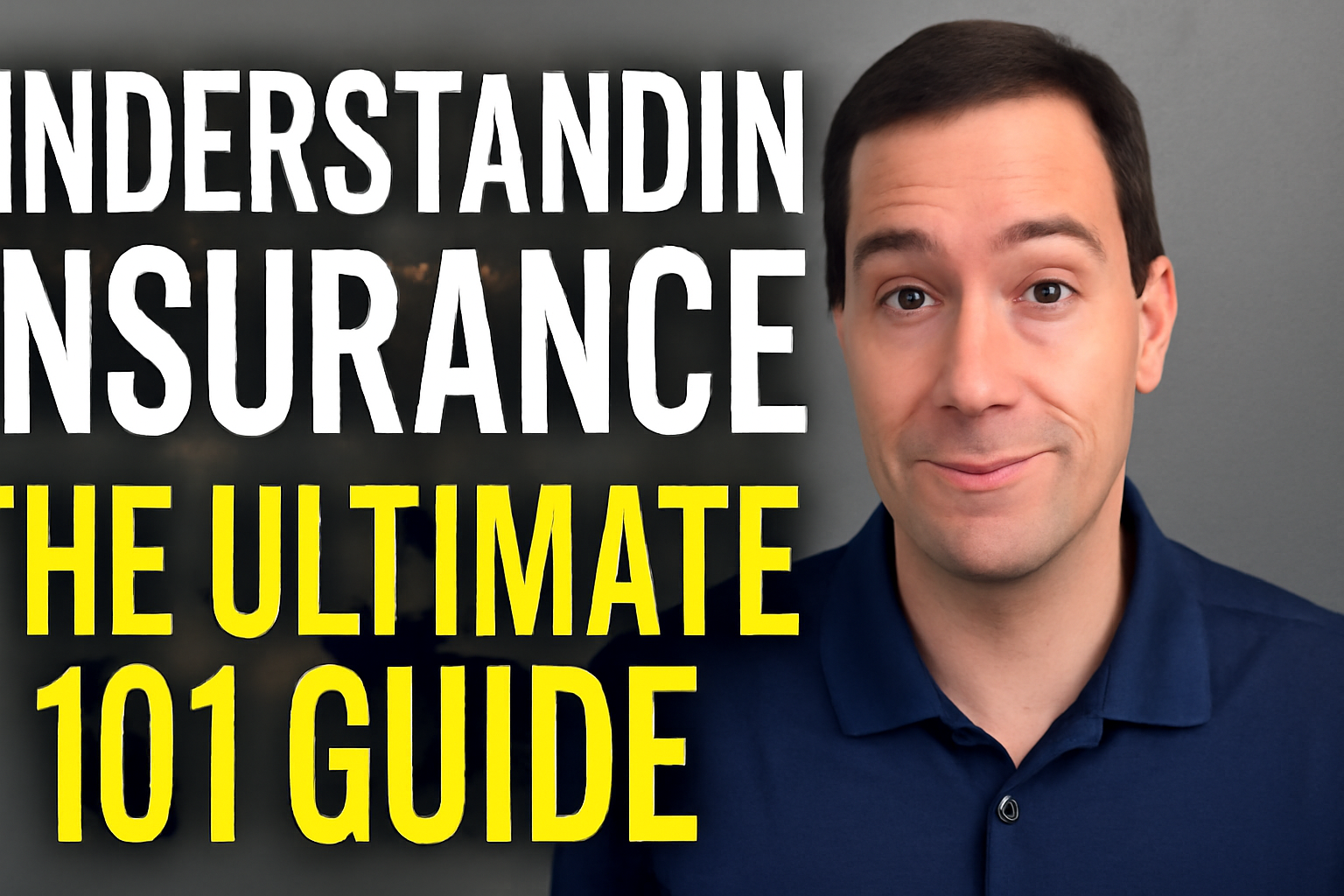What is Car Insurance?
You got the keys, you’re ready to go… but wait, do you have insurance? What is insurance? Today, we’re going to go over the best insurance tips and overall coverages that you need to know. This is the 101, the bible of insurance.
Overview of Insurance
Hey guys, this is Mark Flockhart with Think Insurance. If you’re new to this channel, welcome! Don’t forget to subscribe if you get value out of this. Also, you may have heard this line before – if you go back about four or five years, I actually made a video called Insurance 101 that still holds true. So, if you get time, go back and watch it, but it’s about 22 minutes long. I thought I’d make a faster version because, over the past decade, I’ve learned some new ways to explain insurance that make it a lot simpler. Keep in mind that the disclosure is the same – I don’t know exactly what state you’re in, whether you’re in New York, Michigan, or Florida, and we may talk about those throughout this video. However, this is a generalized version of how insurance works. At the end of the video, I’m going to show you some examples and recommendations of things I would lean towards in other videos that you should look into to get more advice going forward.
The Essential Reason to Buy Insurance
The essential reason that you buy insurance is to protect yourself. You have assets to protect and future income to secure. The biggest way to understand this is that you want your insurance company to have more money than you. If your income is here and you own your home and other assets, your level is here. You want your insurance company to be just a little bit richer than you are, financially. That way, if something happens, and they have to sue, they sue the insurance company instead of you.
Three Primary Pieces of Insurance Coverage
There are three primary pieces to insurance: coverage for others, coverage for you, and coverage for your vehicle.
- Coverage for Others: Bodily Injury
This is the amount your insurance will pay for medical costs if you injure someone else in an accident. If your car hits someone else’s, they go to the doctor or hospital, and the limit you pick is how much your insurance will cover. They do this in one of two ways: per person and per accident (e.g., 10/20 or 100/300). A common coverage is 250/500, meaning $250,000 will cover the injured person’s medical expenses. The total coverage for an accident will be $500,000. - Coverage for Others: Property Damage
Property damage coverage applies if you damage someone’s property, like their car or house. A common starting point is 25/50/25. That’s $25,000 for property damage, $50,000 for injuries, and $25,000 per accident. You can also choose higher limits, depending on your situation. - Coverage for You: Medical Payments and Uninsured/Underinsured Motorists
Medical payments (Med Pay) is coverage for anyone in your car. Uninsured/underinsured motorists coverage protects you if the at-fault driver doesn’t have enough insurance to cover the damages or is completely uninsured. It’s essential to match your bodily injury limits with your uninsured motorist limits for consistency.
Understanding Personal Injury Protection (PIP) and Medical Payments
In certain states, you can choose between MedPay or PIP (Personal Injury Protection). PIP provides medical coverage, work loss, and death benefits, in addition to medical coverage. It’s a broader package and more beneficial in some states.
Coverage for Your Vehicle: Comprehensive and Collision
When it comes to coverage for your car, you have two options: comprehensive and collision.
- Comprehensive Coverage
This covers acts of God, such as theft, vandalism, hail damage, or if a tree falls on your car. It also covers animals like deer that you might accidentally hit while driving. - Collision Coverage
This covers your vehicle no matter what. If you hit another car or a house, collision coverage will pay for the damage to your vehicle.
Full Coverage Explained
When you hear “full coverage,” it typically means both comprehensive and collision coverage. It’s a package that covers all the potential damage to your vehicle and ensures you’re protected in an accident.
Deductibles and How They Affect Your Premium
The deductible is the amount you pay out of pocket before the insurance covers the rest. For comprehensive and collision, you can choose a deductible. Typically, people choose $500 for collision and anywhere between $100 and $500 for comprehensive. The higher the deductible, the lower your premium will be.
Conclusion: Choosing the Right Coverage
When picking insurance coverage, you need to balance affordability with protection. Remember that your coverage choices depend on what you can afford and what’s important for you. If you’re unsure, consult with an insurance agent who can guide you based on your needs.
This format keeps the paragraph intact while adding relevant headings and a title.


